Kinds of nozzles on a drill for metal cutting
Who has not encountered during the repair with the need to cut a metal part? Among the masters most likely there is no person who would refuse a powerful portable tool. In most cases it is used:
- disk of the Bulgarian;
- milling machine;
- scissors for cutting metal.
But the modern market of power tools does not stand still, and now there is a nozzle on the drill for cutting metal.
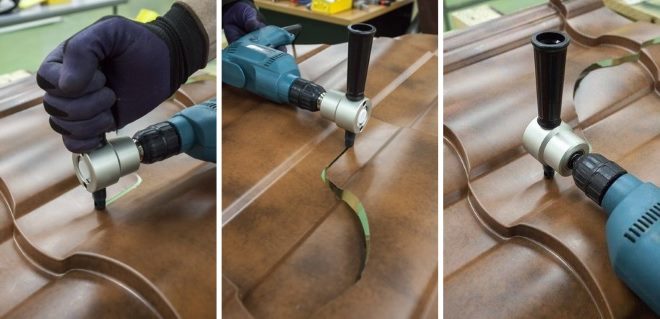
Content
What are the nozzles for?
Different types of cutters as a result of repeated repeated movements cut out the metal using a matrix. As a result, durable metal can be processed. In this way, we cut, punch or grind a metal surface. Point effects allow you to work carefully without disturbing the structure of the elements.In addition, the natural protective layer of the product.
Using the nozzles, you can work on these metals:
- two millimeter aluminum plates;
- copper, brass, iron, zinc and steel elements;
- galvanized parts with a thickness of 1.5 mm;
- stainless steel with a thickness of 0.8 mm.
Use drill
It's no secret that the drill can be used not only as a drill, but also as a multifunctional tool. There is a whole set of various devices that facilitate the work of the worker.
For example:
- metal cutter for the drill, it avoids the monotonous manual work with the file;
- nozzle scissors on the drill provides the ability to cut metal sheets and elements;
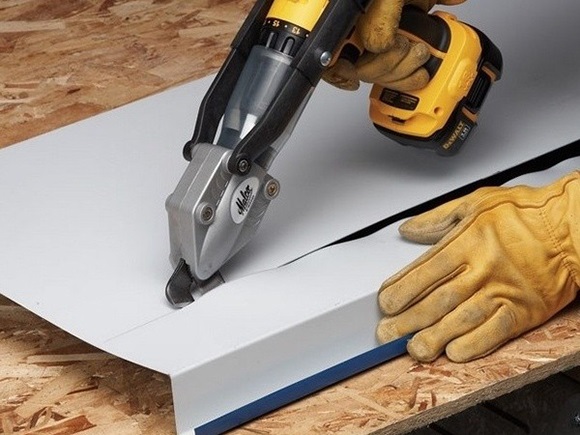
- drill bit for cutting metal tiles In turn, it helps to carefully cut the roof of sheet metal at any angle.
Working with this kit requires some skill, but over time you will understand the advantages of this method.
Let us consider each option in more detail.
For cutting tiles
Another name for this drill bit is a cricket. The kit is used for both smooth surfaces and profile iron sheets. The advantage of this cutter in the possibility of creating a smooth cut, without burrs and irregularities.
Drill bit cricket is convenient to use for:
- cutting sheet products;
- cutting parts from metal sheets.
Since its application does not depend on the spatial location, you can easily cut a horizontal, and even a vertical sheet.
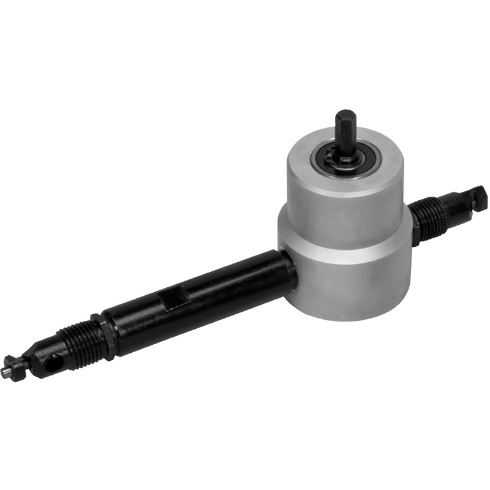
Nozzle scissors
Of all the nozzles presented, this is the least like a drill. It turns the drill into an electric, not a scissors. They work on the principle straight cut, cutting metal with sharp edges using mechanical force. This is a rougher way to cut metal and plastic. Such scissors perform only straight cuts, it is very difficult to change its direction in the process of work.
This kit is more suitable for wireless tools.
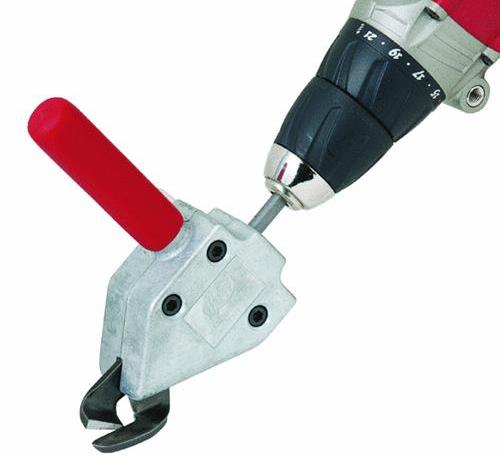
Milling cutter
In another way, this nozzle is called roller cone It is designed for processing wood and metal products:
- the roller cutter replaces the file;
- significantly speeds up the grinding process;
- eliminates defects.
Cones of different shape can be included in one set, thus, for each concrete situation it is possible to choose the most suitable attachment.Some of them outwardly practically do not differ from the drill.
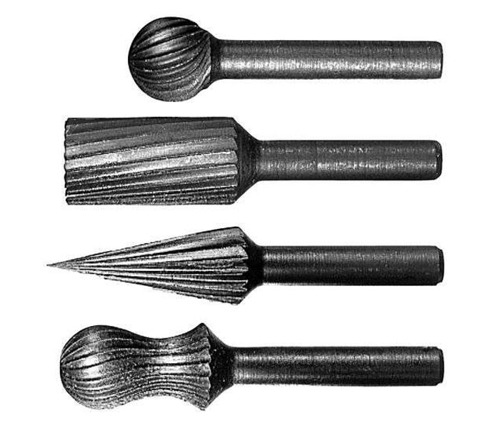
Crowns for metal
In addition to the basic nozzles, there are other devices, such as a crown for metal. This special drill is designed for making wide holes.. Its use is due to the need to run communication. The minus of the crown for metal is its rudeness: the edges of the hole require additional processing. It is in such cases that the cone comes into play.
The set of crowns can include both simple edges, and with a diamond dusting. With their help, you can drill concrete floors and a thick metal sheet.
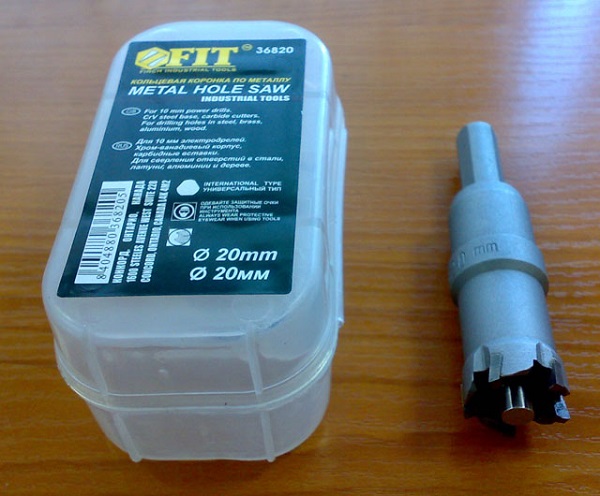
Riveter
Such a nozzle, like a riveter on a drill, is different from a conventional mill or cone. It is used to join or fasten with small rivets. Riveting is a tedious process if handled. In addition, you will have to use several conventional riveting tools. That is why the riveting with a drill and riveter is very popular among builders.
Peculiar fixing method requires some preparation. In the details of the pre-made special holes using ordinary drills. Riveted parts are securely interconnected, forming a strong connection.
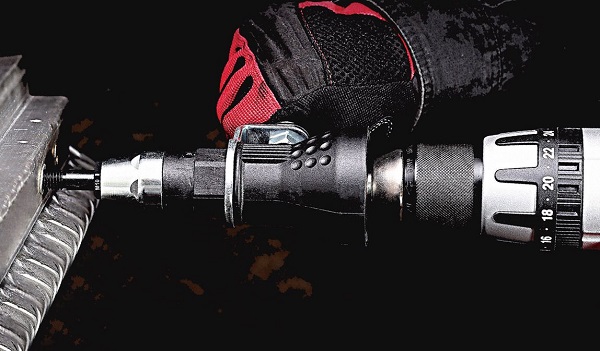
The nozzle on the drill helps to quickly and accurately handle the metal without special expensive machines. They can be used with different types of drills, but its power should not be below 2,700 revolutions per minute. Of course, the drill is not always able to replace professional tools, but for non-permanent repairs it fits perfectly. Plus is also ease of use: to master any nozzle does not need to spend a lot of time.

/rating_off.png)











